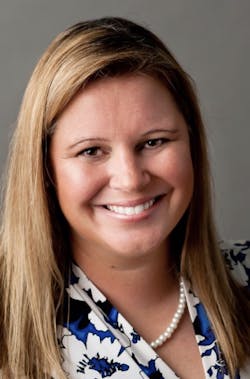Work smarter, not harder: How DSOs and groups can use teledentistry for consistent training and improved quality control
By Julia Heinrichs, DDS
I first heard “work smarter, not harder” as an associate in a dental group that had three offices in different cities. There are many benefits to owning multiple practices or joining a dental service organization (DSO), such as lower overhead, volume purchasing discounts, and more efficient use of employees. These all contribute to higher profitability.
Another benefit of a group practice or DSO is the brand recognition that comes with being a trusted name in dentistry in many communities. Ideally, when patients visit one of your offices, they know what they’ll get, no matter which location they visit. This is the key behind any successful franchise. Consistency is only achievable through the implementation of systems and quality control.
However, one of the great downfalls of a DSO and group practice model, and one of the common criticisms, is the potential of diminished quality as the organization grows. If only group practice owners could clone themselves and be at all of the practices at once to personally train employees and be assured that emergencies are handled in the proper manner.
Teledentistry advantages
Practice owners can now achieve this without cloning! Thanks to teledentistry software such as TeleDent by MouthWatch, dental group owners and DSO executives can consistently train and implement quality control checks with little effort. Let’s use the new associate just out of dental school as an example. Both the associate and group or DSO will benefit from frequent mentorship during the new graduate’s first few months in practice. No matter where they are located, a senior dentist and new associate can log into a chart and seamlessly review treatment plans in synchronous (live) or asynchronous (store and forward) mode.
Through teledentistry, dentists can use either modality to share radiographs, intraoral photos, patient charts, files, and dental models to discuss treatment. With these frequent interactions, associates will not only quickly rise to a high level of experience and confidence, but they will quickly meet patient expectations of receiving consistent high-quality care when they visit any office with the DSO’s or group’s name on the sign.
What’s more, the more frequently the virtual mentoring sessions occur among teams, the more consistency the organization has across all locations. This is especially helpful if a staff member from one office needs to fill in at a different location, such as during vacation season.
Scalability and virtual mentoring
As associate dentists gain experience and confidence, via teledentistry they can confer with senior dentists on more difficult cases. For example, think of a challenging cosmetic veneer case. Spacing, rotated teeth, and color may require modifications to the standard veneer preparation in order to obtain ideal esthetics. An experienced dentist who has made these types of modifications countless times can guide the associate virtually through the process.
Teledentistry can also be used to enable senior auxiliary members to train and mentor new auxiliaries. For instance, a senior dental assistant training a recently hired dental assistant can virtually review tray setup. Why? Because by striving for consistent and predictable tray setups in every operatory in every location, the DSO or group practice can perform procedures more efficiently, which prevents the waste of time and materials.
Assistants can also share tips for fabricating high-quality temporaries and lab work. This prevents extra appointments for ill-fitting dental work, to redo impressions, or to repair temporaries, all of which irritate patients.
Also, experienced hygienists are able to mentor new hygiene graduates or new hygiene department employees in much the same way. They can discuss and demonstrate techniques virtually, such as how to give more comfortable injections (where permitted by state regulations), or how to perform more effective scaling.
Other best practices and new policies that can be discussed and explained virtually include the recent changes in periodontal protocols, the use of lasers (if permitted by your state dental board), or the use of ultrasonics during COVID-19. Once again, you can ensure that your highest standards of care are met on a day-to-day basis via frequent virtual training and mentoring.
Managing first and lasting impressions
Training via teledentistry is not just for clinical practitioners. This concept applies to all roles in the dental office. Establishing systems and maintaining quality control in the front office is critically important. If you check online dental office reviews, you will notice that patients are not shy about expressing their anger over discomforts. They are also vocal about billing errors or rude individuals answering the phone or working the front desk.
Let’s start with the first impression. A new patient will judge your entire company within the first 10 seconds of a phone call and again within the first 10 seconds of walking into the office. Important scripting and etiquette can be reviewed through virtual meetings.
The front office should use consistent scripting in all of the company’s locations. A treatment coordinator working in one state should use the same terminology as an insurance coordinator working in another. Through a teledentistry training session, people can incorporate approved messaging and explanations while reviewing real case presentations and insurance policies.
Finally, when reviewing patient charts, trainers can work on the content. How well can employees work with the practice management software? Do they know which attachments to send to insurance or how to handle patients with two insurance policies? If not, guiding employees by reviewing real patient charts is an excellent training tool. You can see gaps in knowledge and where training on company systems is needed as they work through patient charts.
Last but not least, front office positions tend to see high turnover, so it’s vital that newly hired employees are brought up to speed with consistent, high-quality training. This training will help your front office personnel be better equipped to deal with the day-to-day challenges of their jobs and will decrease turnover. Your patients will be happy too!
Conclusion
Once you have brought a new employee up to speed, frequent meetings are needed among the different offices to review systems and reinforce consistency across multiple locations. Even seasoned dentists will have multiple ways of approaching a case, especially those who joined the group or DSO through an acquisition. Retraining former owners or legacy associates is challenging. However, using teledentistry to facilitate more interaction will lead to improved compliance with the new systems and protocols that the new owner puts in place.
Teledentistry is a broad term for the use of information technology and telecommunications for dental care, consultation, education, and public awareness. With rising expenses and the entire dental industry facing constraints not seen in decades, DSOs and groups can’t afford not to implement teledentistry so they can “work smarter, not harder.”







